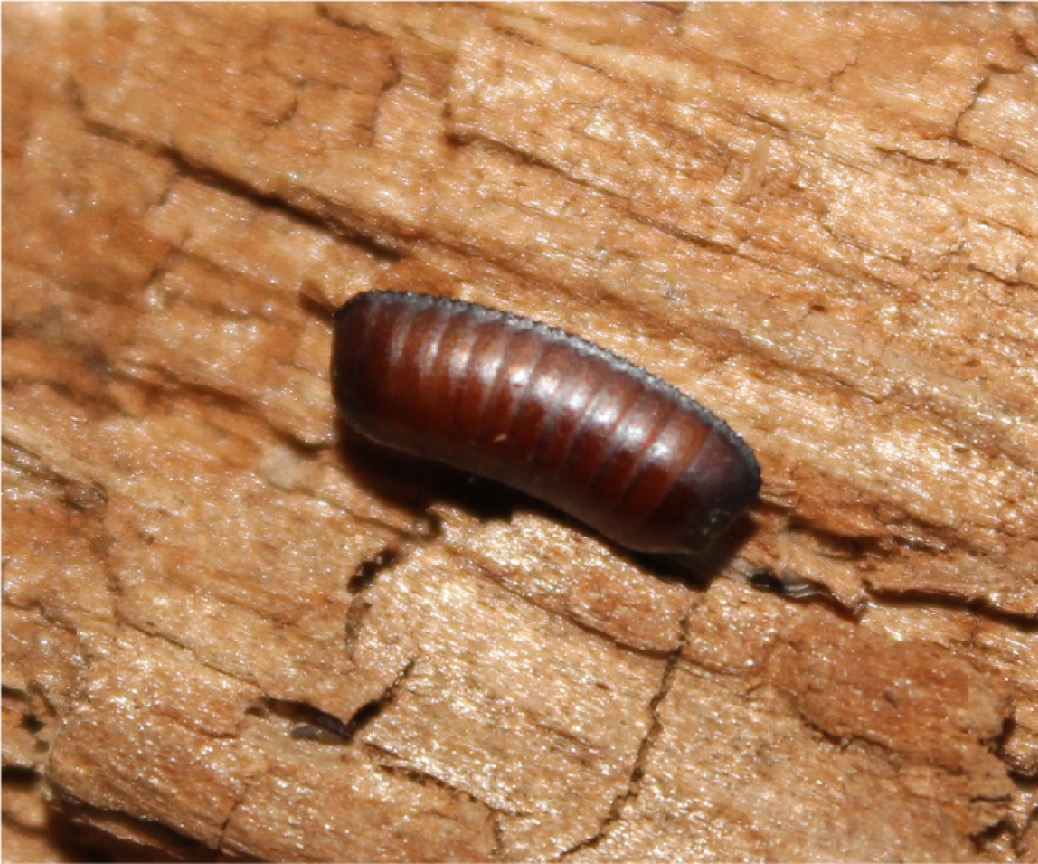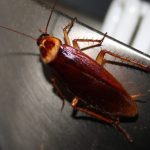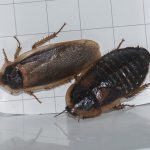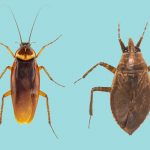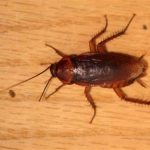Cockroaches are one of the most common pests found in homes and businesses across the world, and they can be incredibly difficult to get rid of once they have taken up residence in your space.
Knowing what cockroach eggs look like is an important first step in identifying and eliminating an infestation before it gets out of hand. In this article, we will discuss what cockroach eggs look like, where they are typically laid, how to identify them, and how to prevent a cockroach infestation from occurring in the first place.
What are Cockroaches?
Contents
- 1 What are Cockroaches?
- 2 How To Identify Cockroach Eggs
- 3 How Do Cockroaches Reproduce?
- 4 What Do Cockroach Eggs Look Like?
- 5 Common Types of Cockroach Eggs
- 6 Where Do Cockroaches Lay Their Eggs?
- 7 How to Get Rid Of Cockroach Eggs
- 8 How Long Does It Take for Cockroach Eggs to Hatch?
- 9 What Do Roach Droppings Look Like?
- 10 How Big Are Cockroach Eggs?
- 11 Can Cockroach Eggs Stick to Your Clothes?
- 12 Do Cockroaches Lay Eggs When Killed?
- 13 Conclusion
Cockroaches are insects that belong to the order Blattodea, which includes around 4500 species worldwide, though only about 30 species are known to live within human dwellings or structures near them.
They range in size from a few millimeters to several centimeters depending on the species, with some having wings while others do not.
They have flattened bodies and long antennae, as well as six legs that allow them to move quickly when disturbed or threatened by predators or humans alike.
They feed primarily on organic matter such as food scraps and other debris found indoors or outdoors, though some species may also feed on plants or even small animals such as insects or spiders if given the opportunity.
How To Identify Cockroach Eggs
Although cockroaches are disgusting, they’re harmless to humans.
However, cockroaches are notorious for spreading disease. For example, they can spread salmonella, which causes food poisoning.
They can also spread other bacteria and germs that can cause diseases in humans. That’s why it’s important to get rid of cockroaches as soon as you spot them.
Unfortunately, getting rid of cockroaches can be hard. Fortunately, there are a few simple ways to identify cockroach eggs so that you can get rid of them without killing them.
How Do Cockroaches Reproduce?
Cockroaches reproduce through a process called parthenogenesis, which basically means that females lay eggs without needing fertilization from males.
However, males are still necessary for mating purposes so that new generations can continue to be produced by the female cockroaches over time.
Female cockroaches can lay anywhere between 10-50 eggs at a time, depending on the species.
These eggs are usually deposited into specially prepared egg cases made out of a combination of proteins secreted by their bodies and saliva mixed with dirt or debris collected from their environment.
What Do Cockroach Eggs Look Like?
Cockroach eggs vary in appearance depending on the species; however, all types share certain characteristics that make them easily identifiable.
Generally speaking, cockroach eggs are oval-shaped and range from 1–2 mm in length, with a light yellowish-brown hue that darkens over time as they mature.
The egg cases themselves may be slightly larger than the individual eggs contained within them, but will generally appear smooth and glossy due to their protein coating.
Some types of cockroaches may have different colored egg cases, such as brownish-black for German roach eggs or reddish-brown for American roach eggs.
However, these colors usually become more pronounced once they begin hatching into nymphs.
Common Types of Cockroach Eggs
The two most common types of cockroach eggs found indoors are German roach eggs and American roach eggs.
Both of which have distinct appearances that make them easily recognizable even without magnification tools such as microscopes or magnifying glasses.
German roach egg cases tend to be brownish-black in color, while American roach egg cases tend to be reddish-brown.
Both types usually measure between 5-7 mm long when fully grown but can grow up to 12 mm long depending on environmental conditions such as humidity levels, etc.
It’s important to note that German roach egg cases tend to contain more individual embryos than American roach egg cases, with up to 50 embryos per case compared to around 10 for American roach egg cases.
So, it’s important to keep an eye out for multiple cases when dealing with either type of pest infestation since this could indicate a much larger problem than initially thought.
Where Do Cockroaches Lay Their Eggs?
Cockroaches spend their entire lives hiding in dark, humid places, such as bathrooms, basements, and attics.
However, once breeding season comes around, they come out at night to look for mates and lay their eggs. Cockroaches lay their eggs in dark, humid places like sewers and drains.
In these places, the eggs will hatch rapidly and survive without sunlight or water. Cockroaches are tough creatures that can withstand a lot of stress.
However, this doesn’t mean you should keep your house as messy as you’d like. Cockroaches can spread disease and leave an unpleasant smell behind.
How to Get Rid Of Cockroach Eggs
Cockroaches are gross! They carry germs and transmit diseases through their droppings and saliva.
This is particularly a problem in restaurants, schools, offices, and homes. In fact, cockroaches have been known carriers of typhoid, cholera, dysentery, diarrhea, and food poisoning.
Roaches tend to hide in dark places where they can’t be seen easily. These places include crevices, cracks, and holes.
You can usually find them in the cracks and crevices of the baseboards and cabinets in the kitchen, bathroom, or bedroom.
Use a vacuum
Use a vacuum cleaner to remove their eggs by vacuuming the cracks and crevices where you have spotted them. Be sure to turn off the vacuum and empty the canister afterward.
Use spray
Use a spray that is formulated to get rid of cockroaches, like Raid® cockroach gel or aerosol. Spray the cracks and crevices where you have spotted them. Be sure to turn off the spray and empty the canister afterward.
Use bait
Use bait gels or traps to trap the cockroaches. Be sure to turn off the bait and empty the canister afterward.
Use a product like Raid® cockroach gel or aerosol.
Spray the cracks and crevices where you have spotted them. Be sure to turn off the spray and empty the canister afterward.
How Long Does It Take for Cockroach Eggs to Hatch?
Cockroach eggs hatch in 40 to 50 days on average.
Egg laying is seasonal and is controlled by the temperature. During the winter, roaches develop more slowly, and egg laying is delayed.
During the summer, roaches develop more quickly, and egg laying occurs earlier. Cockroaches can lay up to 200 eggs at once, and the eggs take 2 to 3 days to hatch.
Although cockroaches start laying eggs in the spring, most eggs hatch in the summer. Cockroaches don’t lay eggs all year.
Instead, they lay eggs only during the spring and early summer, when they need a reserve of eggs for breeding.
What Do Roach Droppings Look Like?
Roach droppings, also known as roach feces or roach poop, look like dark specks of dust.
However, these specks are actually quite dangerous. Roach droppings contain bacteria, viruses, and parasites that can be harmful to your health.
Roach feces can also spread disease by coming into contact with food or surfaces in your home. Roach droppings, for example, can spread salmonella, E.coli, dysentery, and giardia.
Roach droppings can get everywhere in your home, including your mattresses, carpets, and kitchen counters.
The best way to get rid of roach feces is by hiring a professional exterminator.
How Big Are Cockroach Eggs?
Cockroaches are known for being disgusting pests.
They’re also notable for their prodigious breeding capabilities. Their eggs, in particular, are large and disgusting.
A female cockroach can lay between five and 50 eggs at a time, each of which is around 1/10 of an inch long. That’s about four times larger than a chicken egg.
Cockroach eggs are also much more durable than chicken eggs. A cockroach egg can survive up to 14 days without water, while a chicken egg can only survive a few days.
Cockroach eggs also hatch more quickly, as it only takes a few days for an egg to hatch into a nymph. Finally, a cockroach egg can remain viable indefinitely if properly stored.
For these reasons, cockroaches are disgusting pests that are well-suited to survival.
Can Cockroach Eggs Stick to Your Clothes?
Cockroaches are one of the most disgusting creatures in the world.
Many people don’t like them at all because they’re dirty and ugly. However, some species of cockroaches have a fascinating trait: they can lay their eggs on clothes!
This bizarre trait was first discovered by scientists in 2013. Since then, scientists have conducted many experiments to learn more about this trait. However, there are still many unanswered questions about this trait.
For example, scientists don’t know exactly why cockroaches can lay their eggs on clothes. They also don’t know how long the eggs can remain on clothes before they hatch.
Despite their many unanswered questions, scientists do know that cockroaches can lay their eggs on clothes. This trait is very interesting, and it could reveal some secrets about cockroaches.
Do Cockroaches Lay Eggs When Killed?
Cockroaches don’t lay eggs when killed.
After being killed, the ovum in the cockroach’s ovaries gets fertilized by the sperm from the male’s testes. After fertilization, the ovum develops into a zygote that implants itself in the cockroach’s uterus.
The zygote grows into a larva before developing into an adult in about two months. The adult cockroach produces sperm and eggs that replace those in its ovaries and testes.
Conclusion
In conclusion, what do cockroach eggs look like?
Cockroach eggs look like slimy cylinders. They are about an inch long, with one end wider than the other.
They have an off-white color, but inside they are yellow or orange. Cockroach eggs hatch into tiny cockroaches within 30 days.
The newborn cockroaches are blind and defenseless, so they need their mother for protection until they grow larger. An adult cockroach can live for several months to several years.
They are attracted to dark and moist places, such as basements and kitchens. Female cockroaches lay 5 to 50 eggs at a time, typically every 2 to 3 weeks.
Cockroaches can spread disease through their droppings, so if you have them in your home, it’s crucial to remove them immediately.

